Meet the golf course manager: Richard Mullen
The course manager at Banchory Golf Club in Aberdeenshire explains why the venue is an ecological haven that is rightfully being recognised for environmental best practice.

Set above the banks of the River Dee, the picturesque par 69, 18 hole golf course offers a challenge with its strategically placed bunkers and mature native trees providing a test that even the most accomplished players can embrace.
Here to detail what life is like at this special venue, and in particular how it has achieved ecological goals, even during Covid-19, is course manager Richard Mullen.

Can you give a description of your background and how long have you now been at Banchory Golf Club?
Thirty years in this industry and worked at Murrayfield, Swanston, The Oldmeldrum, Meldrum House and now Banchory. Studied at Oatridge College and currently doing a diploma at Elmwood.
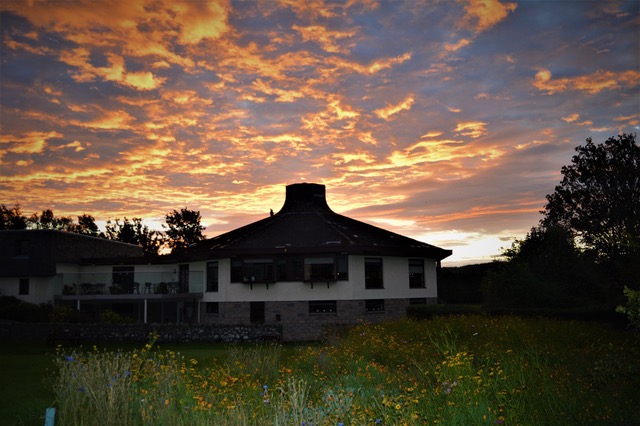
It wasn’t set out from the start that we had to be sustainable, staff levels and topography told me we had no option and had to adapt to overcome to produce better surfaces for the club. We feel we are on the right path but one of the main roles is educating the golfers as to ‘why’ and giving back some knowledge so they can understand.

What is the overall size of your team, how do you work together to meet the daily needs of the workload across the course?
The team is currently Steven Shaw, assistant; Fraser Morrison, trainee; Paul Mackay, senior assistant; and myself. Currently we have Paul on furlough for the foreseeable future and that’s a blow man-power wise but necessary financially. We are constantly linked up to communications in radios and phones so the dialogue is constant after morning meetings as someone is prone to changing his mind!

Covid-19 has brought about change to daily life and working practices. How has this impacted on you, your team and the course and what actions have you been forced to take as a result?
Like everyone I suppose it’s hit me hard. BIGGA and R&A guidelines were understandable and in black and white so everyone didn’t get confused as to what you could or couldn’t do. We are still two staff down as we normally have seasonal staff and Paul is still off so we only have 60 percent workforce.
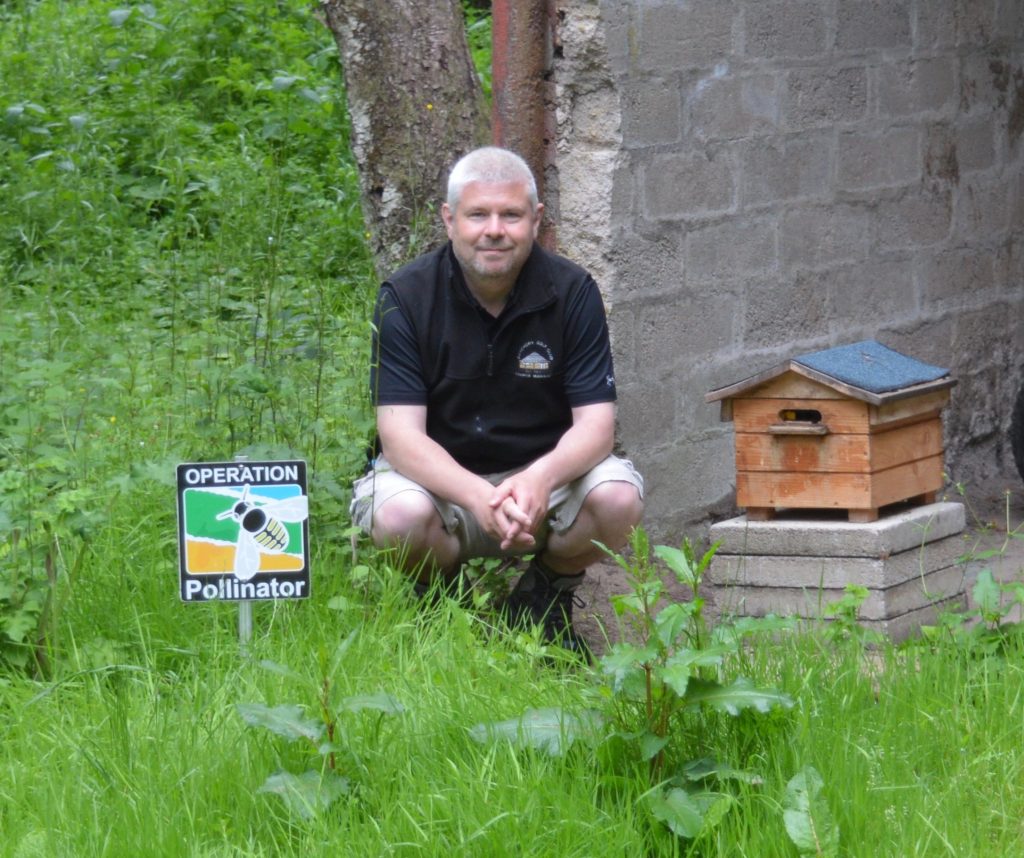
Refinement and little odd jobs are being left when they never have been in the past and we have to prioritise jobs which is hard for people to understand but our tee sheet since reopening has been full from first thing in the morning until night. Split shifts wouldn’t make a difference so management of time and effectiveness is key.

You are one of only 20 people worldwide to have won and become a GEO Sustainability champion this year, congratulations! And the course is now also GEO certified. What set you on the path of managing and improving the course by way of sustainability, biodiversity and ecology and for you to achieve such high accolades and put Banchory Golf Club on the map?

Crazy! Thank you! Amazing achievement for anyone to be recognised but personally after only being at Banchory for five years it’s absolutely mind-blowing.

We have many reasons for leading down this route but being sustainable and not throwing artificial products at profiles and killing good bacteria and fungi was high up the list. We needed to find another way both financially and something that’s practical. So, we asked the questions: Why did we reach for the insecticide; What else can we do? So we thought outside the box to encourage starlings and bats to name two species onto the course more as their main diet was either leatherjackets or crane fly. Made sense to at least try cultural methods and it snowballed from there as we felt we got success.

Sustainability takes real commitment, real action and leadership, much of which you have undertaken in your own time for the benefit of the club. How have your efforts contributed to budget savings whilst managing and improving the playing surfaces of the course?
Two people would be better to answer this but I’ll try on their behalf and explain. My assistant Paul and my wife Claire! At home I’ll be in dialogue with Alex Stuart from NESBIP for example and I’ll come up with ways to encourage certain species onto our site, get word to Paul that this is what I’m thinking and is it achievable and before you know it, Paul’s enthusiasm has seen him raid his father’s shed and tear pallets apart and suddenly he’s created a red squirrel feeder or a pine martin box! Weekend ruined maybe in some people’s eyes but not ours.
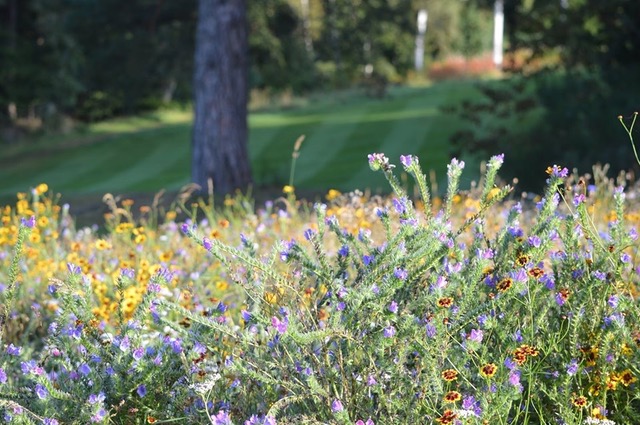
Using products that harm species can be easily done so educating ourselves more and learning is the answer. Not applying insecticides and fungicides has savings of over thousands of pounds per application alone! This is the answer in a nutshell: that’s not sustainable nor good for our environment by the River Dee.
Attracting new members is always tough, it’s always a battle but a battle we feel we have put the club on a step that it can shout from, environmental issues are rightly to the front of people’s thinking so if we can attract people to the club that way then it’s a win.

You have personally invested in two beehives and manage these in your own personal time, what species of bee are they and how do they work with the Euroflor to contribute to the wellbeing of the course and ecology?
I have two Bombus hives on the course which are very simple and self-managed. I buy in the two colonies at the start of summer and they are positioned out of sight and play in areas where they can live and prosper. At the end of their lives the queen creates five or six ‘new’ queens that leave the hive and create their own colonies around Banchory. Increasing Bombus numbers and allowing more pollination in our wildflower meadows and surrounding farmland I’m sure.

You are a keen user of Rigby Taylor products, what in particular appeals to you about the range and how do they fit in to your annual course management programme?
Ultrafine ryes were a blessing from year one as they gave us grass coverage on surfaces quickly and allowed us to push the sward levels to an acceptable level.

What level of service does Rigby Taylor give and in what ways and how does this benefit you, members of your team, and the end product (the course) that you deliver to the paying members?
With a tight budget we need to know that a product has longevity and does what it says on the tin so to speak. Rigby Taylor products have never let me down from FE to organic fertilisers and have helped us produce the course we do with limited staff resources.
You were also an R&A and STRI ‘Environmental Greenkeeper of the Year’ finalist. What made you enter and how have you and the course benefited from this pool of passionate people, and do you think it was worth all the hard effort?
I entered us because I felt we could learn from peers and it would open doors for the club in terms of learning and development. The clubs that are involved have passion, drive and commitment to not only their club but the surroundings and the place golf has in modern society.

Yes, I think it’s worth the journey but like anything when you receive accolades and get publicity it is only good if you utilise that or as they used to say in the past, ‘today’s news is tomorrow’s fish and chip wrapping’.

You are also the recipient of the ‘2020 North East Biodiversity Partnership Award’. How did this come about and how are you working with schools and communities to support education and the marketing of the golf club?
Another I didn’t see coming! We are currently working closely with nurseries and schools to highlight and promote how we produce a golf course using the biodiversity and ecology of our site. We are creating a site-specific information board explaining what animals and insects call the course home and have asked for help from the academy art department and we have over 80 paintings of animals that we have to choose the best of for our sign; the kids’ names will go up by their picture and this allows a connection between school and golf club that can hopefully be built on going forward. We will get the kids down with local press and obviously this highlights the course.

You introduced Euroflor to the course, how did this come about, what area of the course did you designate, what level of increase in pollinators have you recorded, how has this helped the course and additional business?
Wildflower meadows and creation of them is difficult, we are in year five of our rough management plan and for the first time we have got to a level that it is thinned out enough that plants like native yellow rattle and devils bit scabious are finding space to grow. We wanted an area that had an instant impact and make people stop and say ‘wow’, Euroflor gave us that desired impact. I use social media to educate and explain and local businesses, members, allotments and even National Trusts got in touch and asked if I could help out so I visited these places in my time and explained what we had done and how; all of the sites now have wildflower meadows which is tremendous success.

We have seen a dramatic increase in solitary bees and they use our bunkers as home so a completely different management of these areas was needed, we will smooth rake more often to not disturb. We provide as much sand scrape areas that are out of play to encourage bees away from in-play habitats and provide signs to explain what they are and give people more knowledge, again, education is key, always. These areas have also seen the re-emergence of natural native heather that lined the course 100 years ago, amazing to think the seed bank in the soil just needed that ability to grow through lack of competition.

A number of trial seed plots have been established with the help of Rigby Taylor’s Jayne Leyland. What challenges does the course currently present to you in maintaining the general health of the plant, what are you looking to achieve from the trials, how many plots are you currently running and what are you trialling and have you seen any interesting outcomes as yet?
Shade issues are a big concern – not just shade but we are on a sand profile inland. I cannot just cut trees down and we feel we have reached a limit within resources and cannot create any more light or air space. Andrew Menmuir and Jayne Leyland kindly got involved with my plight and we set out trial plots to assess what cultivars would flourish with minimal inputs and light, Fescues are definitely performing extremely well but are maybe too slow to establish for our site where tetra and diploid rye establish quick but require more inputs, I know people will think that’s textbook but smooth stalked meadow grass and certain fescues are throwing that book out of the window.
It’s a research and development and staff training tool, and reduces our carbon footprint as we don’t buy grass seed to hope it survives, we buy less as we know we will get success.
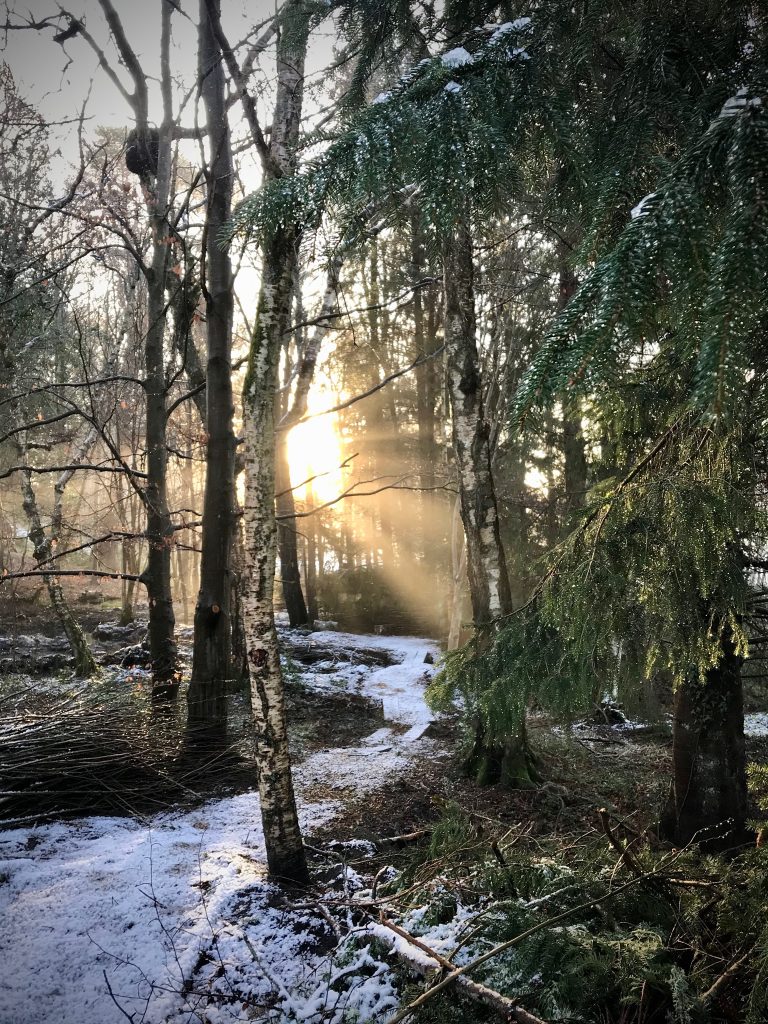
What do you think are the strengths that have carried you through your career?
Some will disagree but we are only custodians of a course and we must produce a course that has a sustainable future. Every decision must be in the best interests of the club both financially and physically but the most important isn’t doing it for a short time it’s about adopting policy that works now and is future proof.

The course has a dense surrounding of trees, a good many of which have preservation orders. What management programme do you operate and how challenging is this?
Very difficult this one and communication and dialogue with governing bodies is key. Proving we are not just chainsaw wielding thugs was the first objective and once people realised we care for our surroundings they know I won’t ask unless it was a threat to business, for example if the 14th green is dead because we cannot grow grass due to lack of light and air, this has an impact on revenue and feedback, this is explained in that context and landowners then become more obliging. Eventually!

What training programmes do you run to ensure you are all being kept abreast of new developments?
All staff are CPD active, and are encouraged to top up training every year but the day to day communication is led by myself and if something new is on the market of interest I will allow them the time to learn about it and then speak through the process and whether it’s viable for what we are trying to achieve.
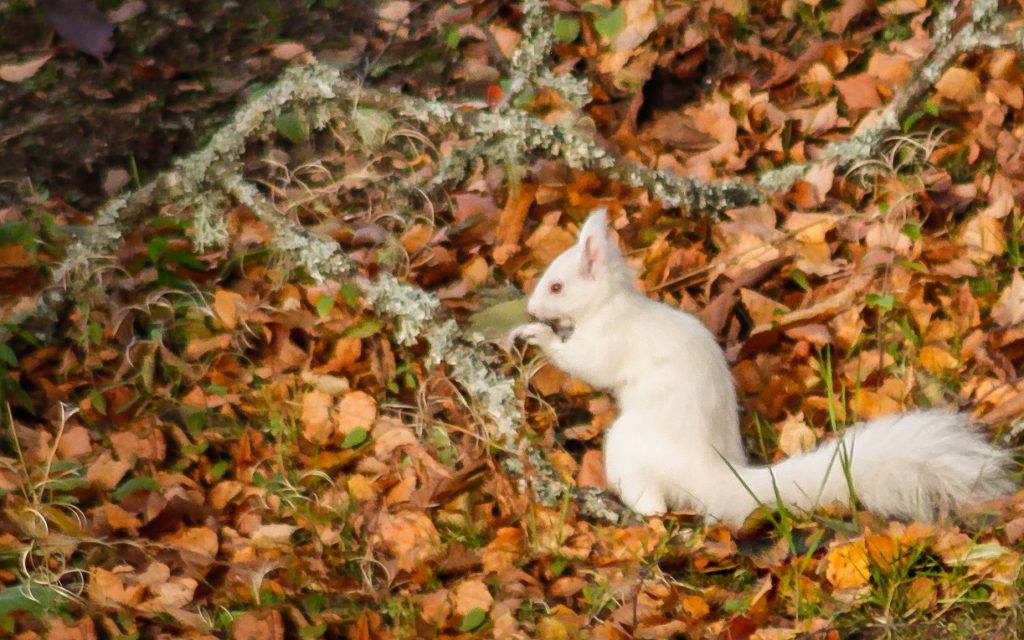
You personally have reached out to the parents of young children in an effort to educate the youngsters in nature, ecology and respect for natural things. What results have you seen and how could this benefit the future business of the club?
Amazing this one! A local nursery came to Banchory to help spread wildflower seeds from Euroflor and Rigby Taylor and learn about pollination, all the kids loved the experience and I received a message from a parent to say that the little lad would not stop talking about his experience and he wanted to go and show his parents his handiwork.
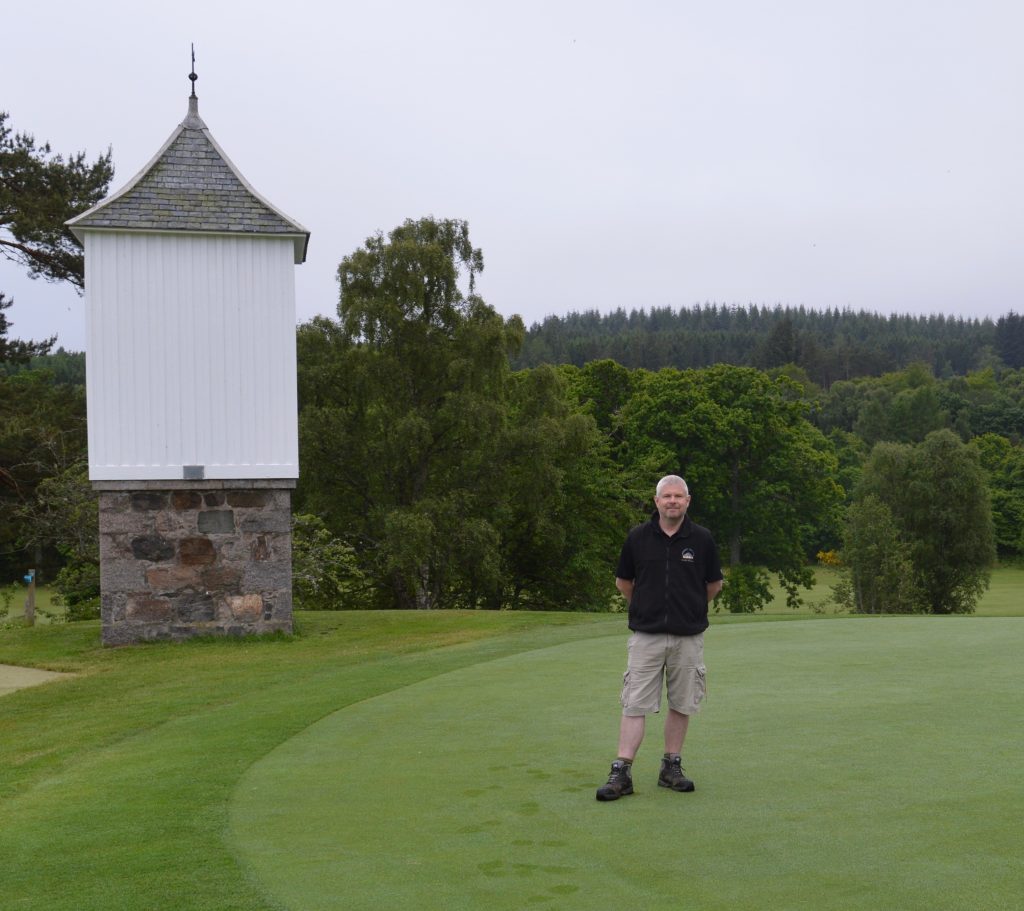
The father was a member and had been trying to get his son to the course for ages and suddenly it was a problem solved! It doesn’t matter how we get kids playing golf it just matters that we do.

Mentors are important to each of us as we start and move throughout our career path. Looking back, who would you say had the biggest influences on where you are today and for what reasons?
I have so many from the past and even every day, the late Jimmy Neilson should have let me go as I was a typical unruly teenager but he gave me a break, I hope I have repaid that faith. Alex Stuart from the North East Scotland Biodiversity Partnership is a fantastic help and allows me the constant advice needed to fill in gaps and even help out with funding issues.

The pressures on the course manager to deliver a better product are growing year on year and the level of professionalism is rising with this. What do you think are the qualities now needed to meet the requirements and demands of golfers by someone in your position and how does this help contribute to the business of golf?
Pressure has always been there but I feel it now has a platform via social media and live TV as everyone sees the standard and everyone has an opinion. You must be a good communicator and be able to explain easy, data recording and dare I say a paper trail must always be there to enable you to strive for better and also to explain issues that the committee may only hear about once a month at meetings. Be approachable and give reasons for tasks and do not let them appear as excuses.

What currently gives you the greatest satisfaction from your job and what do you feel are your biggest achievements to date?
We have a small team, every minute counts which puts pressure on the correct management, being able to produce a course that improves as the staff reduces through the years for varying reasons is a good enough answer but to adapt and overcome and also reach GEO certification and pick up national awards for the work we do is pretty special, it’s not an easy task. We run short term targets and they are pretty simple, the course has to be better than it was yesterday, if that’s achieved at debrief at the end of the day then we won’t be in a bad place.
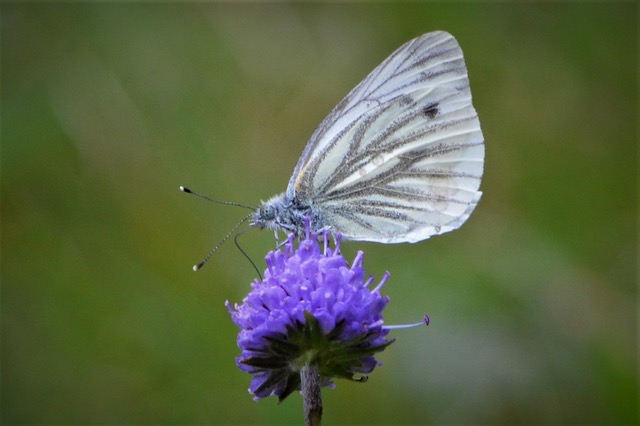
What advice would you give to youngsters wanting to pursue a career in the profession?
I do speak to past colleagues and have trained a lot of guys who are now head greenkeepers, I don’t allow them to live in a bubble and while I’ll protect them from most destructive feedback they can’t be oblivious to the unrealistic demands. This industry is one of the most unique and gratifying professions but you have to work hard, think outside the box and be adaptable within reason.

What changes do you think need to be made to benefit the industry sector and profession of the greenkeeper?
This is one you’ll hear a lot and BIGGA are fighting hard to help and lead: communication and better understanding of what is actually behind the production of a course have all been worked on but unfortunately certain pros over the past 12 months have used courses to take out their frustrations and let’s remember these people are idolised and youngsters copy their every move. It should have been slammed down as ‘that’s not appropriate and not banter.’ This needs to change.















Let me tell You a sad story ! There are no comments yet, but You can be first one to comment this article.
Write a comment